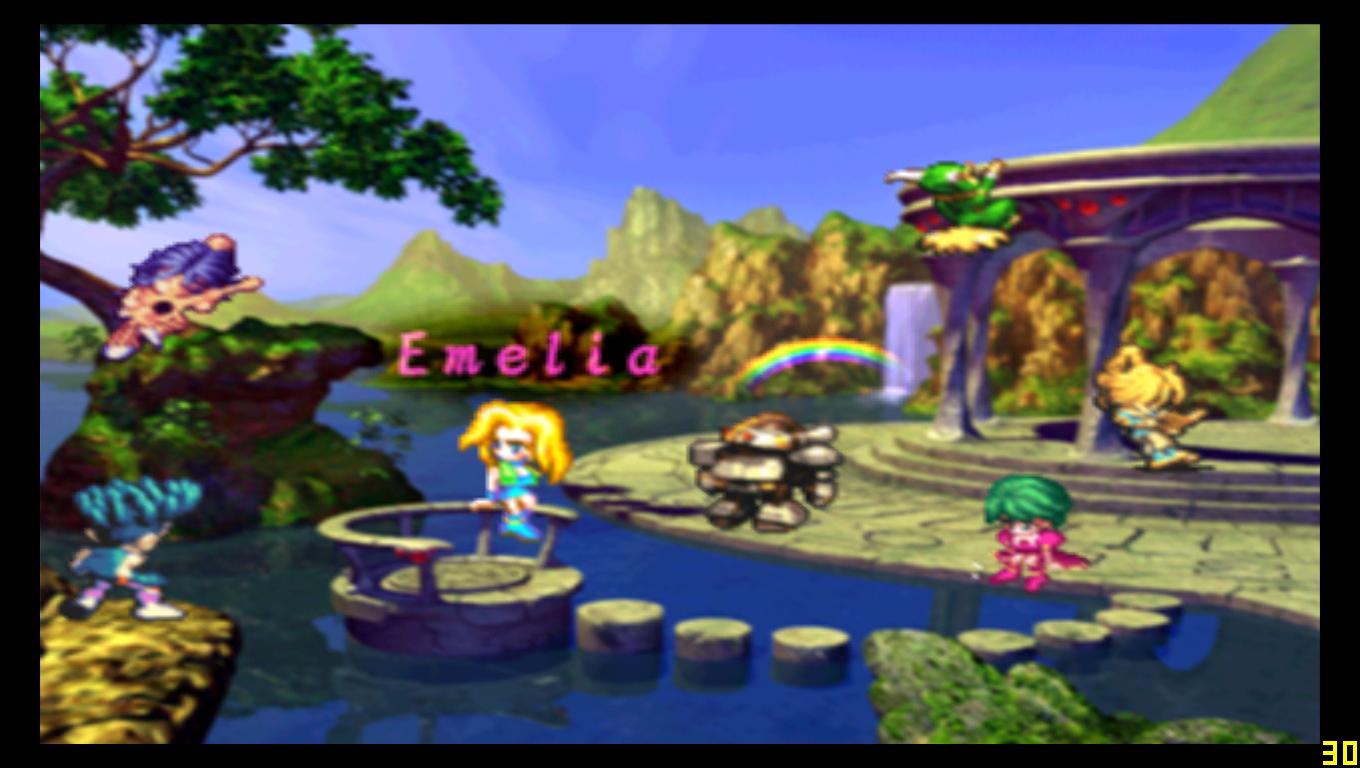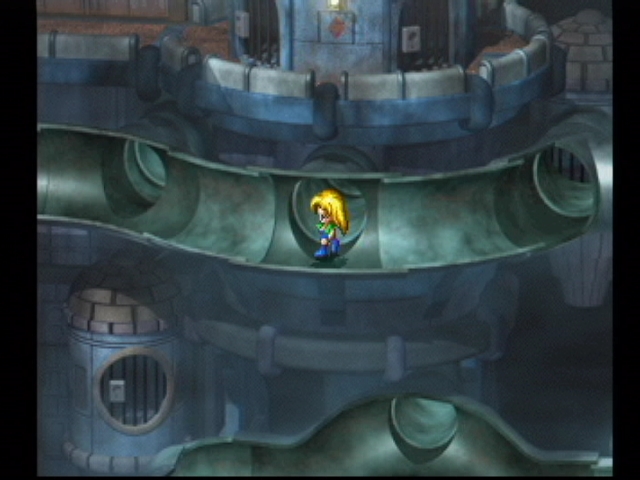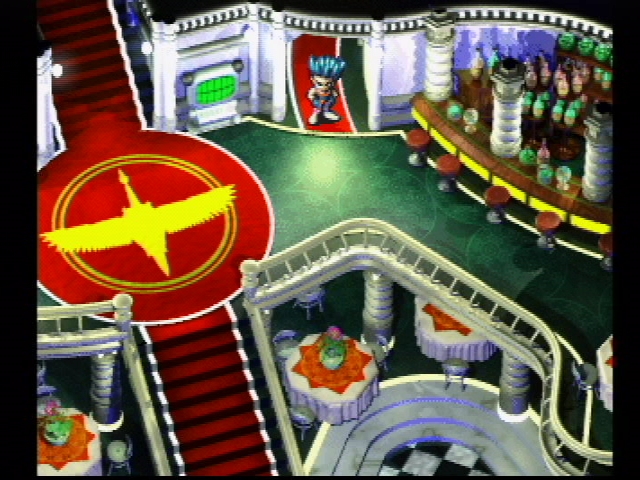This post has not been edited by the GamesBeat staff. Opinions by GamesBeat community writers do not necessarily reflect those of the staff.
SPOILER ALERT. You've been warned. 
I'm indifferent towards the SaGa series, playing few of its games and never quite taking interest in the rest. My understanding is they're sort of the black sheep of Square Enix RPGs, all experimental in some way, borrowing RPG design trends from around the world, both in battle mechanics and narrative. What made me try SaGa Frontier, I no longer remember. Probably a random rental, back when renting games was a thing.
Experimental is a really good way to describe SaGa Frontier. Coming out after the divisive and overrated Final Fantasy 7, and during the early Playstation era of horrendously bad Square Enix translations, SaGa Frontier was rather nonstandard JRPG fare.

The heroes: a vagrant, a vagrant looking for his family, a vagrant on the run from police, a robotic vagrant, a potentially lesbian vagrant, a shape-shifting vagrant, and a snobby vagrant.
For starters, there were seven protagonists (technically eight, but it's not really important). And by "protagonist" I don't mean "good guy who joins your party," as the term is so often and incorrectly used by many internet folk; I mean "seven main characters." You pick one, and for the duration of that character's ten-ish hour quest, they're the hero. Each has a unique story, a reason for venturing about the game world, and a huge list of potential allies they can recruit into a 15 man party.
After your hero's initial introduction you're thrown into the universe of SaGa Frontier, a collection of worlds, called "regions," all floating in an ambiguously outer spacey, cloudy void (think Kingdom Hearts, Reboot, or even Planescape: Torment). Depending on your story, you're either on rails or free to go wherever you want, though every character eventually (sometimes temporarily) gets to the open-ended exploration portion.
The narratives are rather diverse. Blue seeks magical knowledge to defeat his brother Rouge (an optional party member in everyone else's story), learning shocking truths about who he really is. Emelia, framed for her fiance's murder, aims to find the real killer OJ Simpson style. Riki travels in search of the mystical rings that can save his home world. There's a lot of variety, and each hero has the option to recruit up to 14 additional characters, fighting in five man squads.
Combat is turn-based and begins when you run into an enemy on the field. You pick one of your three squads (the other two recover their various resources as the current one fights) and have at 'er. The menus are atypical: you tap left or right to choose a category corresponding to a weapon type (you can equip more than one) or a school of magic. The weapon categories — which include a bare hand/martial arts section — allow for basic or special weapon-specific attacks (e.g., Bound Shot for guns, Life Sprinkler for swords, Kick for martial arts, etc.), and magic categories house all learned spells of a specific school.

Punch is the basic martial art move, with Kick being a special technique. Neither looks like it'll hurt the 14 foot tall mutant man with the wicked claw hands.
Learning new abilities depends on both the type of ability and the character's race. Humans are the most versatile, able to learn new physical abilities in the thick of combat (drawback: you have to keep one or two skill slots open to house the new ability). Humans and Mystics have a chance to learn a new spell by using that school in combat. Monsters absorb new skills — and physical forms — from enemies. Machines can find and equip both parts and programs.
Certain skills could combine into devastating combinations, though there's some luck involved: even if every participants' turn comes up in just the right order, the combo may not trigger. Some abilities lend themselves well to combos: use the gun skills Bound Shot and Cross Shot for easy combos, as they combine with themselves and each other.
The game encourages you to pick your characters' paths and stick with it, gradually rewarding relevant stats based on what you use. Stick with physical attacks to build strength and max WP (the resource for physical abilities). Use magic to build your mind and max JP (the resource for magic spells).

Clean sewer pipes to build your hardiness and max CP (clean points).
Certain heroes introduce their own quest-specific quirk into combat. The mystical rings Riki finds to save his home region? They're usable in combat, each producing a unique effect. Red can change into the costumed superhero Alkaiser, but only if other non-machines in your party are incapacitated somehow and unable to see him change. Blue eventually becomes able to learn opposing schools of magic, turning him into a sorcerous powerhouse (his surprising adeptness at physical disciplines doesn't hurt either).
Combat is SaGa Frontier's core, and the meat of the game. In fact, other than combat and moving around the world to initiate combat, that's it; no minigames, no vehicular combat segments, just fighting and finding the next fight.
Herein lies the first of many problems: being able to go just about anywhere and fight just about anything from the get go means you're going to die. A lot. While SaGa Frontier scales enemies to your relative strength, it doesn't scale bosses, and they don't mess around. An example: I picked Red first, and he's taken to a town. Missing the area where his story-specific event triggers a trip to the next area, I instead went to what I now know is an optional dungeon, the tomb of King Sei. Recovering the three treasures, I was thrust into a boss fight I, barring serious planning given my crap-it's-still-the-beginning-of-the-game power level, couldn't possibly win. And I threw myself at that fight over and over again, honestly thinking that's where I had to go.
Combat itself is a mix of great ideas and head scratching. There are some seriously cool things this game lets you do in battle I don't often see in a turn-based RPG: cast the Light Sword spell to create a lucent blade, and use it with your sword abilities to wreak havoc; a spell called Glass Shield that creates exactly that, and if an enemy attacks the shielded character, the glass breaks and machine guns its shards into the attacker; needing to keep your superhero transformation a secret in battle; and so much more. But what determines turn order seems fuzzy, and bosses sometimes just bust out a horrendously overpowered area attack (Windblast, Reverse Gravity), wiping out your party.
The hero-specific gimmicks affect other parts of your quest, and not always in the most intuitive ways. Asselus's story sees her fleeing mystical enemies, and sometimes they'll ambush you when you're in the middle of an unrelated side quest. Which is pretty nifty… if you're strong enough to take them down. Did I mention you can't run away from any fight in this game? Lute's final dungeon can be instigated almost immediately, and cannot be exited once started.
Actually that applies to several characters, so save in multiple files. And have more than one memory card handy: each character save takes two blocks, with "system data" (which you need to access a secret area after finishing all seven quests) taking up one. That's 15 already, a full PSX memory card, so you'll need a second card for multiple saves.

A Red-specific area. No one else gets to see this place. Like the inside of your pillow fort.
Seven stories and tons of potential party members seem like they lend themselves to a ton of replay value. But development time and encroaching deadlines are very apparent; it's super obvious which quests were done first and which were mailed in. Red, Asselus, and T260G's quests have tons of unique areas, loads of story, and generally good flow. Emelia and Riki recycle many of the publicly accessible locales, though admittedly in ways the other characters don't get to experience. Blue's quest basically makes mandatory what other heroes get as a side quest. And Lute's consists of one unique area — the final dungeon — you can access right from the beginning.
No matter which character you pick, the game regularly throws you into inescapable areas, including, all too often, the final dungeon. It's an exercise in frustration to have to start over because you jumped into a frying pan with no exit. One could argue it's lesson learned, but this gamer tends to favor a more intuitive, forgiving design in his RPGs.
There's a lot SaGa Frontier does wrong, but what it does right enthralls me. There's just a ton of fun to be had seeing the world from all these perspectives, seeing regions intact in some quests while destroyed in another, getting heroes as party members in other heroes' quests, trying to piece together what order this all canonically happened, and fighting every hero's unique final boss. For its problems, the combat system is a blast to figure out and break, and it feels so, so good to make a godlike Blue who gets eight actions every turn, or an Asselus with maxed stats, or a monster with the four Gaze abilities shapeshifted into the deadly Mariche.
SaGa Frontier is far from perfect, though its pros definitely feel heavier than its cons. There's a lot of game here for the patient and methodical gamer, plenty to do and see from different angles. Yet SaGa Frontier is clumsy and ungraceful; finding its treasures probably isn't worth the trouble you'll go through getting to them, no matter how good it feels in the end.
Screenshots from GiantBomb's archive.
Carlos Alexandre is a self-described handsome fat man. He ponders his entertainment, and you can find said ponderings on both his website and the podcast he co-hosts.
